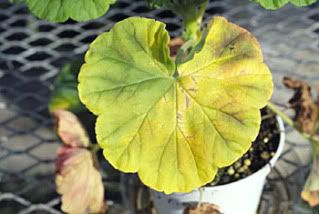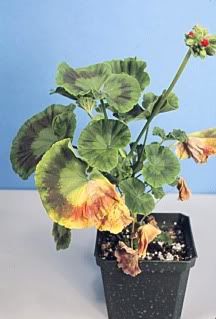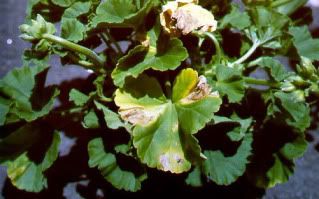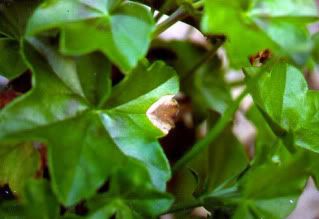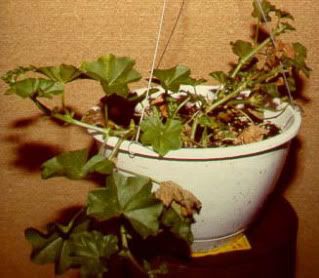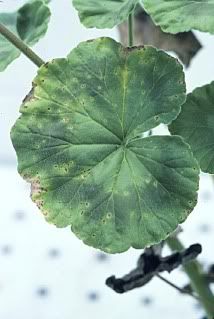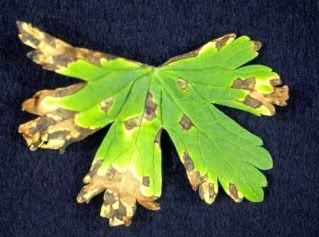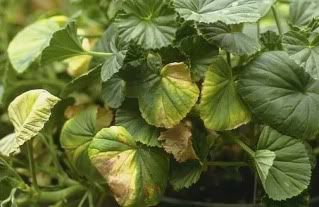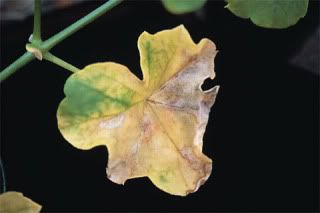Le fisiopatie sono le malattie di origine ambientale.
 
Fra i gerani l’edema è quella più widespread. This physiological condition is a translucent appearance of small pustules, which can heal and become brown in color, are located on the underside of the leaf, especially in areas around the ribs and also on petioles and branches. May form blisters that appear very similar as large lesions, the leaves may turn yellow and fall off the plant. The cause is too abundant in watering, soil that does not dry sufficiently, excessive nitrogen fertilization, high humidity and poor light, is born, especially during the winter dormancy, and then continues during the summer. Even if the swelling does not danneggia gravemente la salute delle piante queste assumono un aspetto sgradevole. La soluzione è quella di bagnare più frequentemente ma con quantità inferiore, sospendere le fertilizzazioni azotate per un mese per poi riprenderle gradualmente, porre i gerani in vaso con un drenaggio di palline di argilla alto 5cm. I danni causati da questa fisiopatia  possono essere confusi con quelli causati dai tripidi.
 
Informazioni supplementari
Macchie senza pustole trasparenti, color ruggine come scabbia, è una fisiopatia conosciuta
come ‘’Il sughero’’. La causa è la stessa, troppa acqua. E’ comune nelle piante più old who are left without protection in the winter, cold and rain. The recommended solution is the same for edema.










